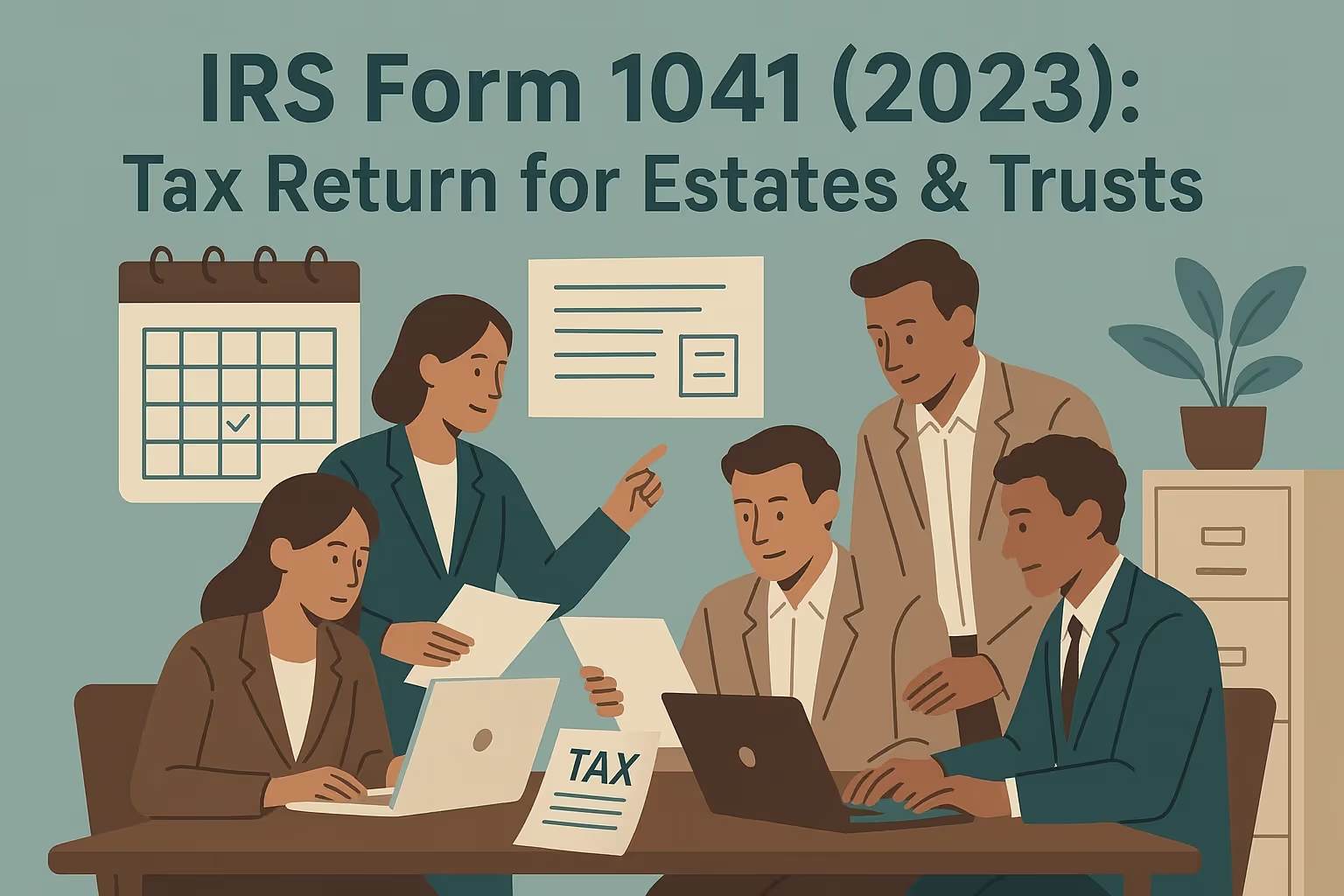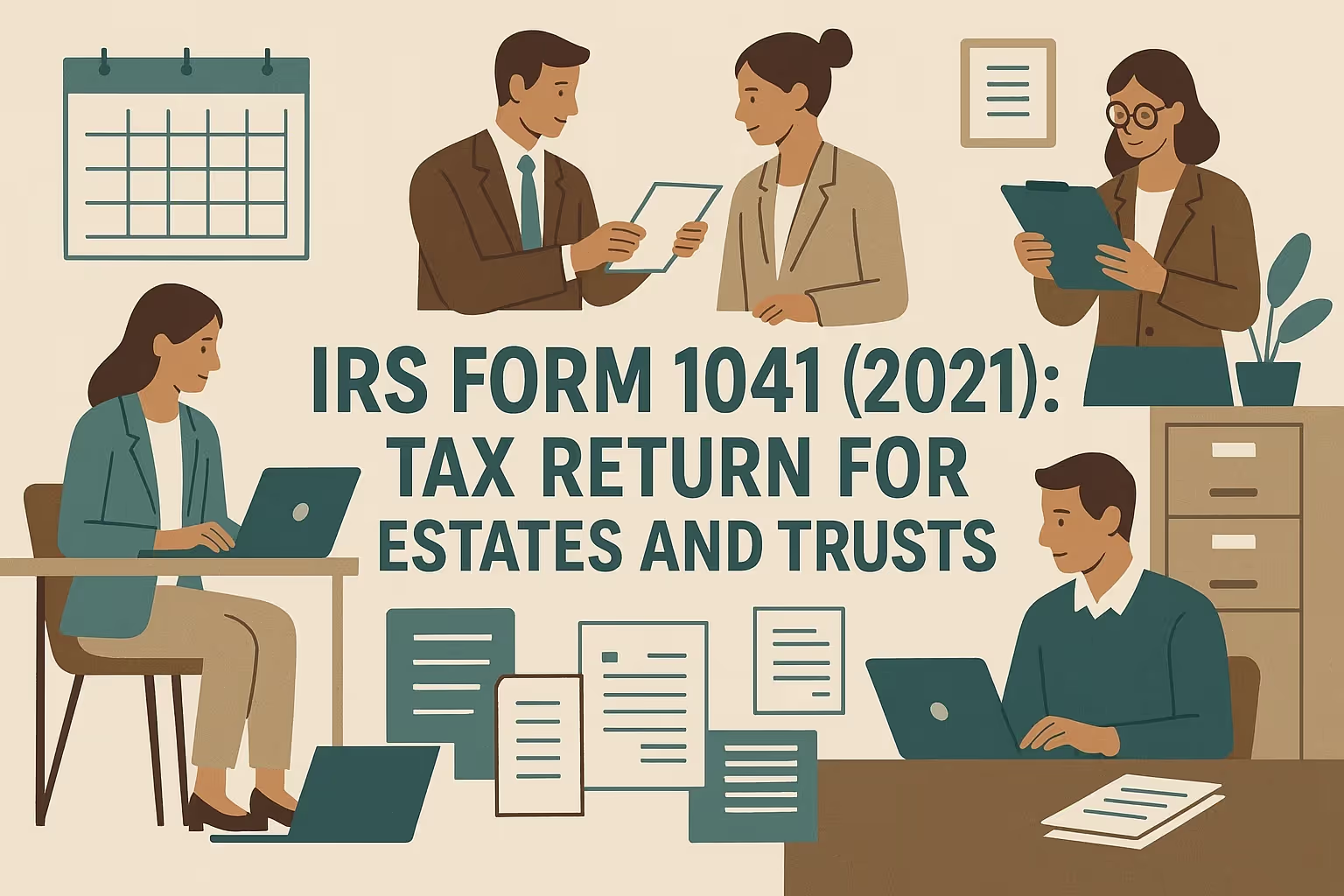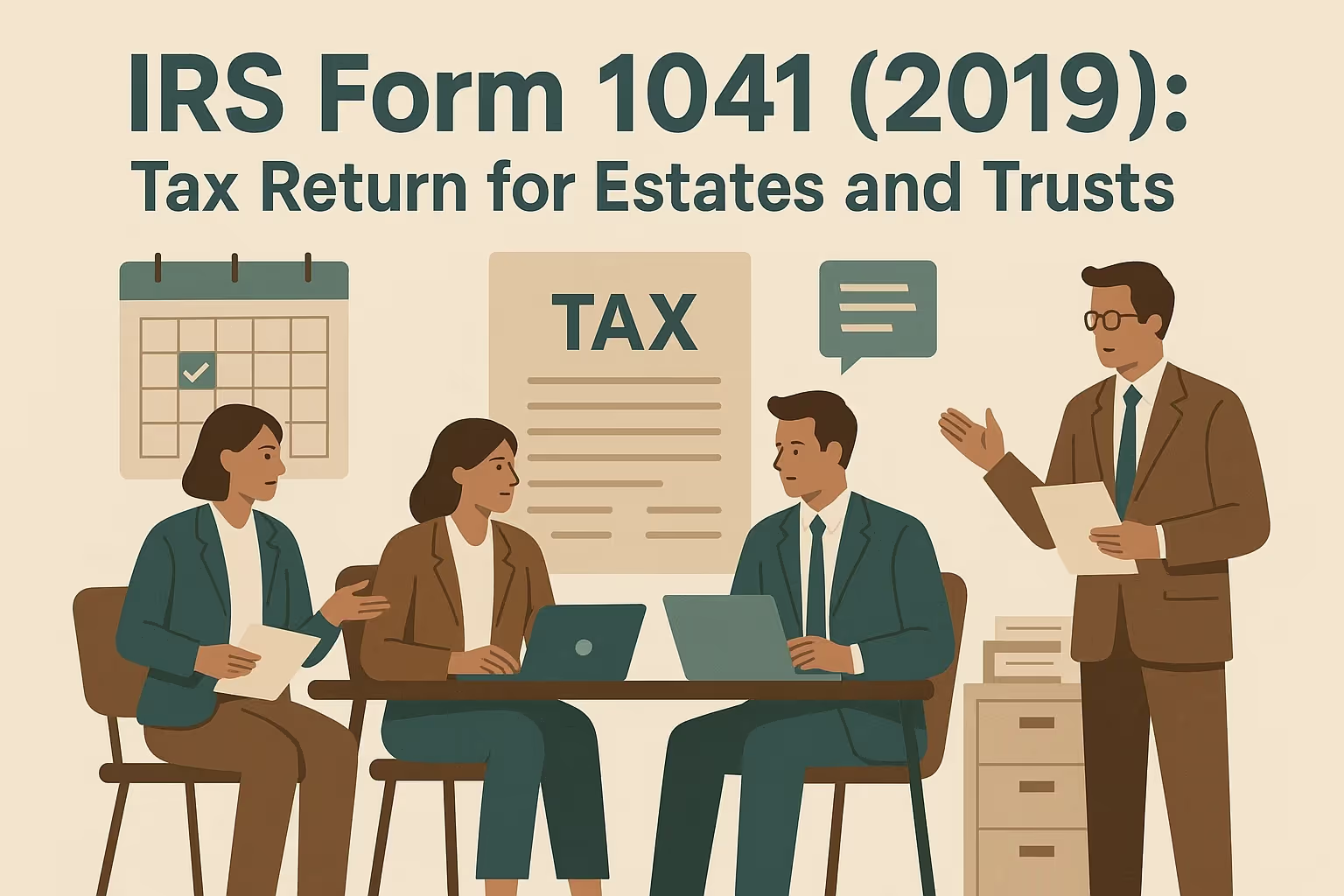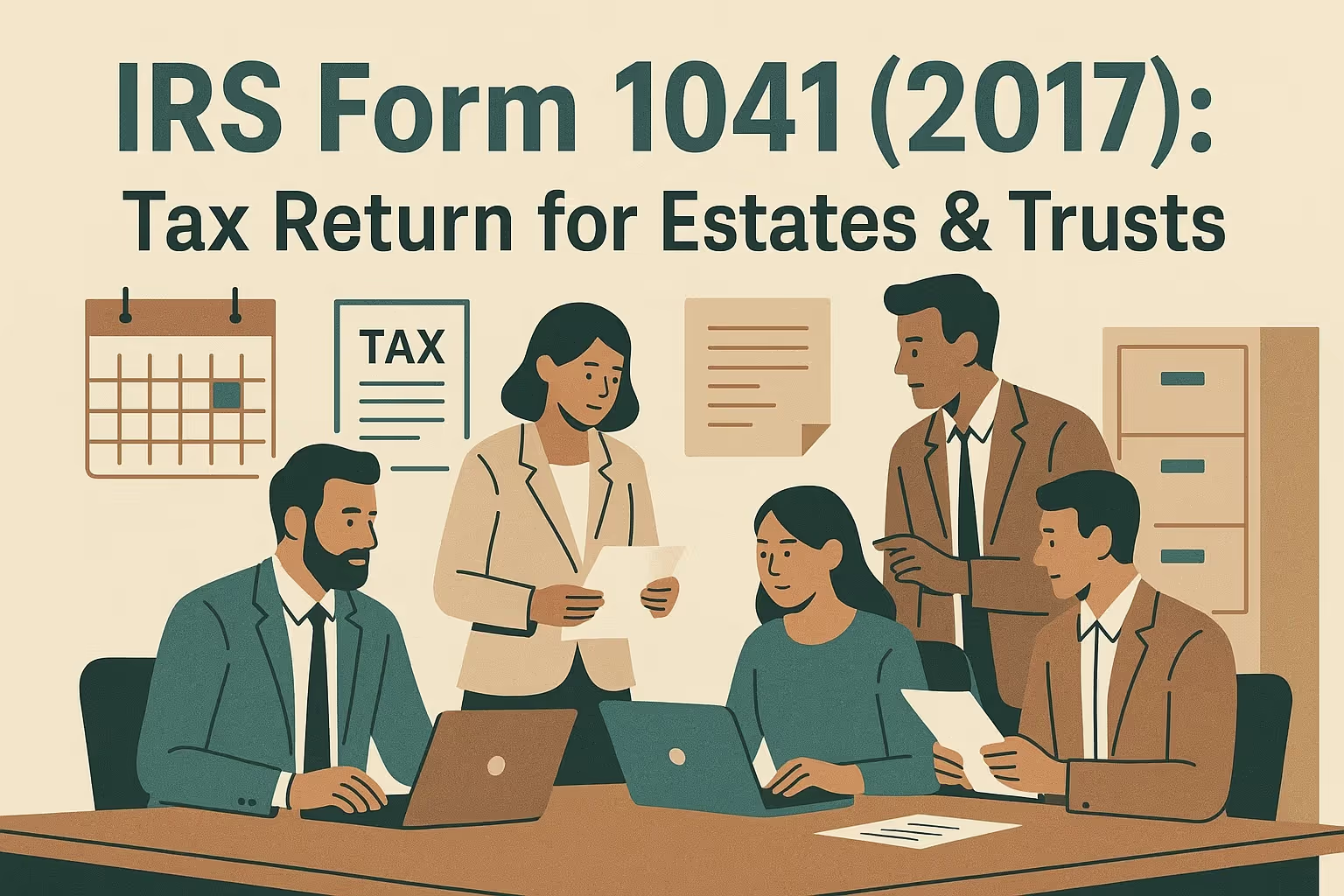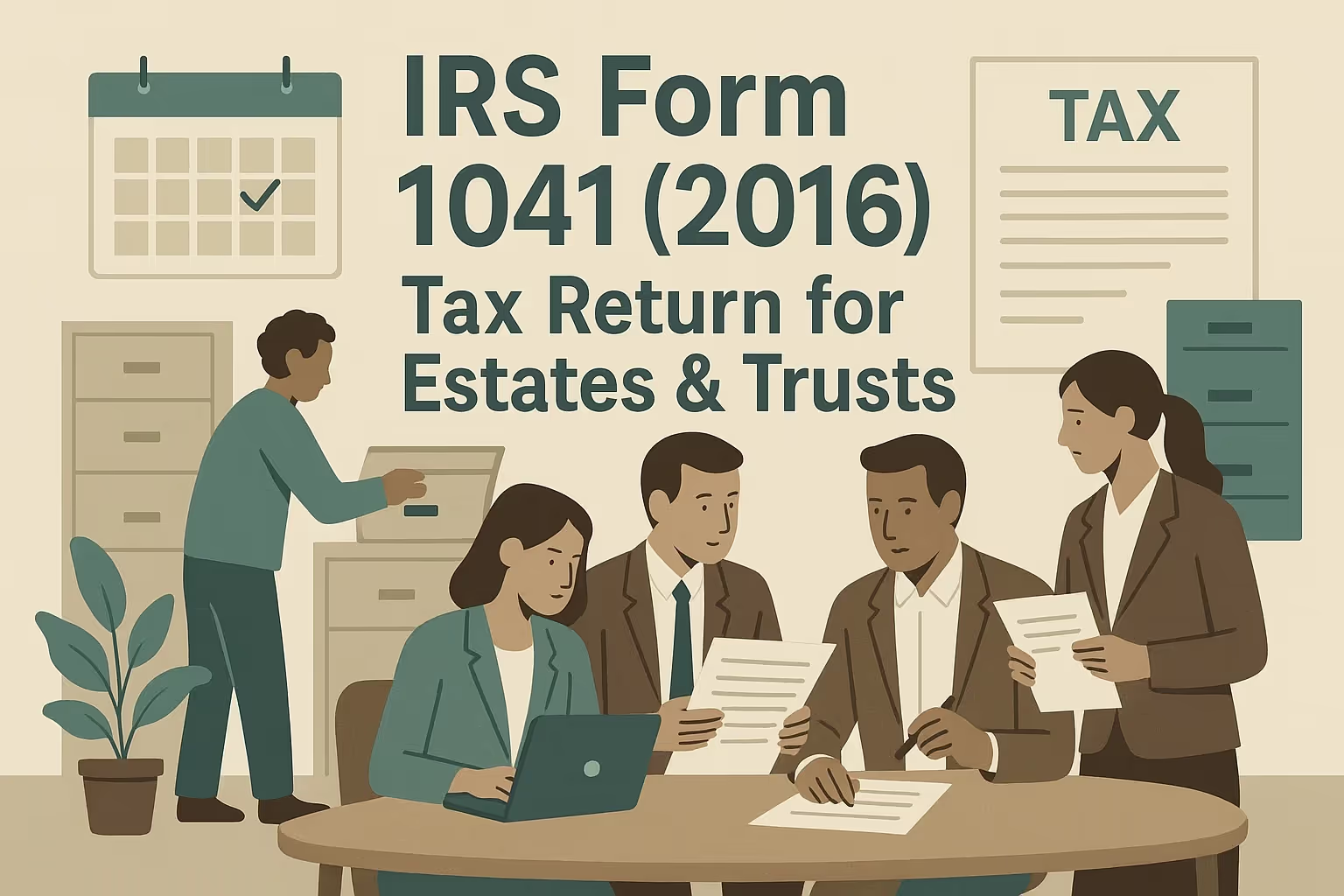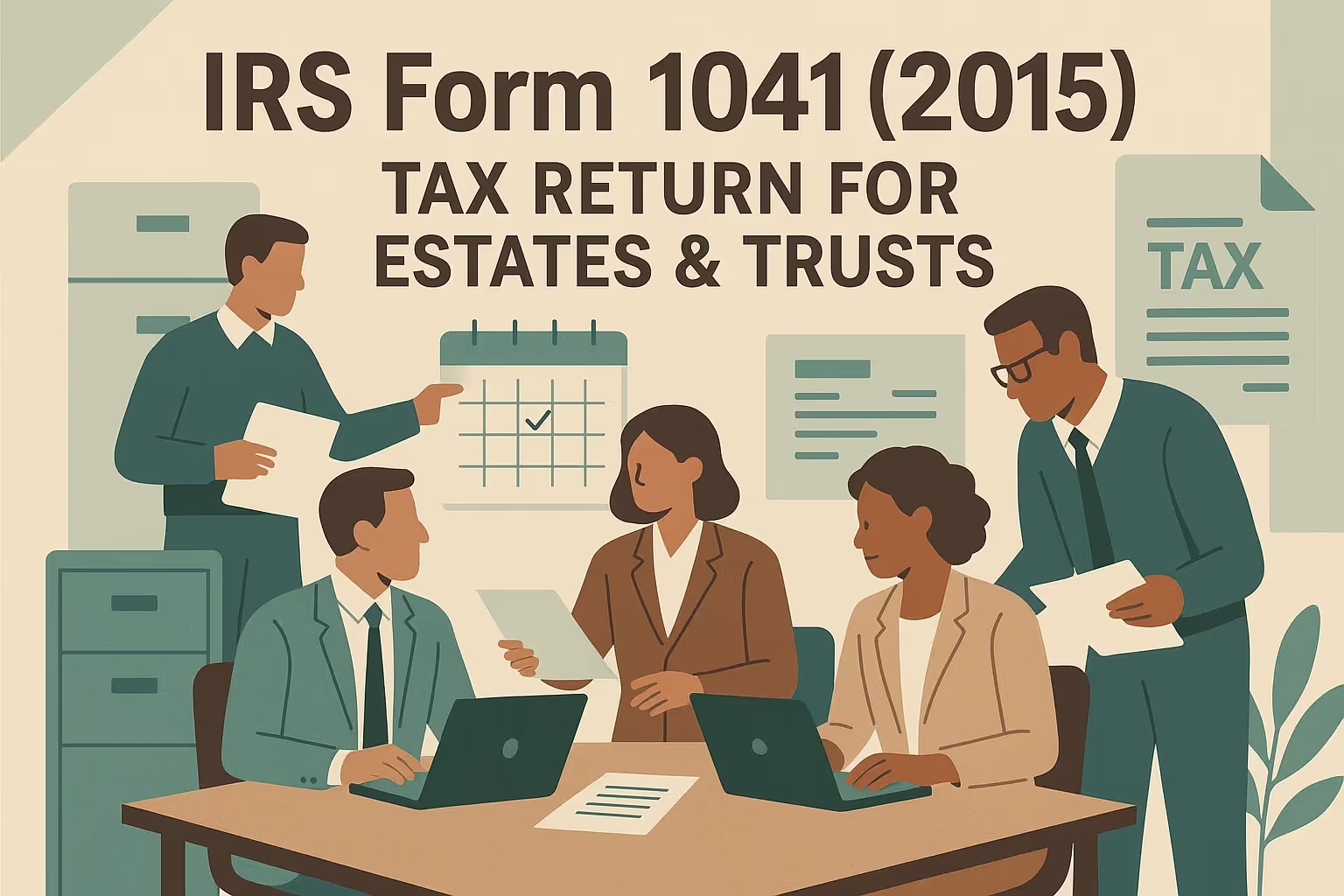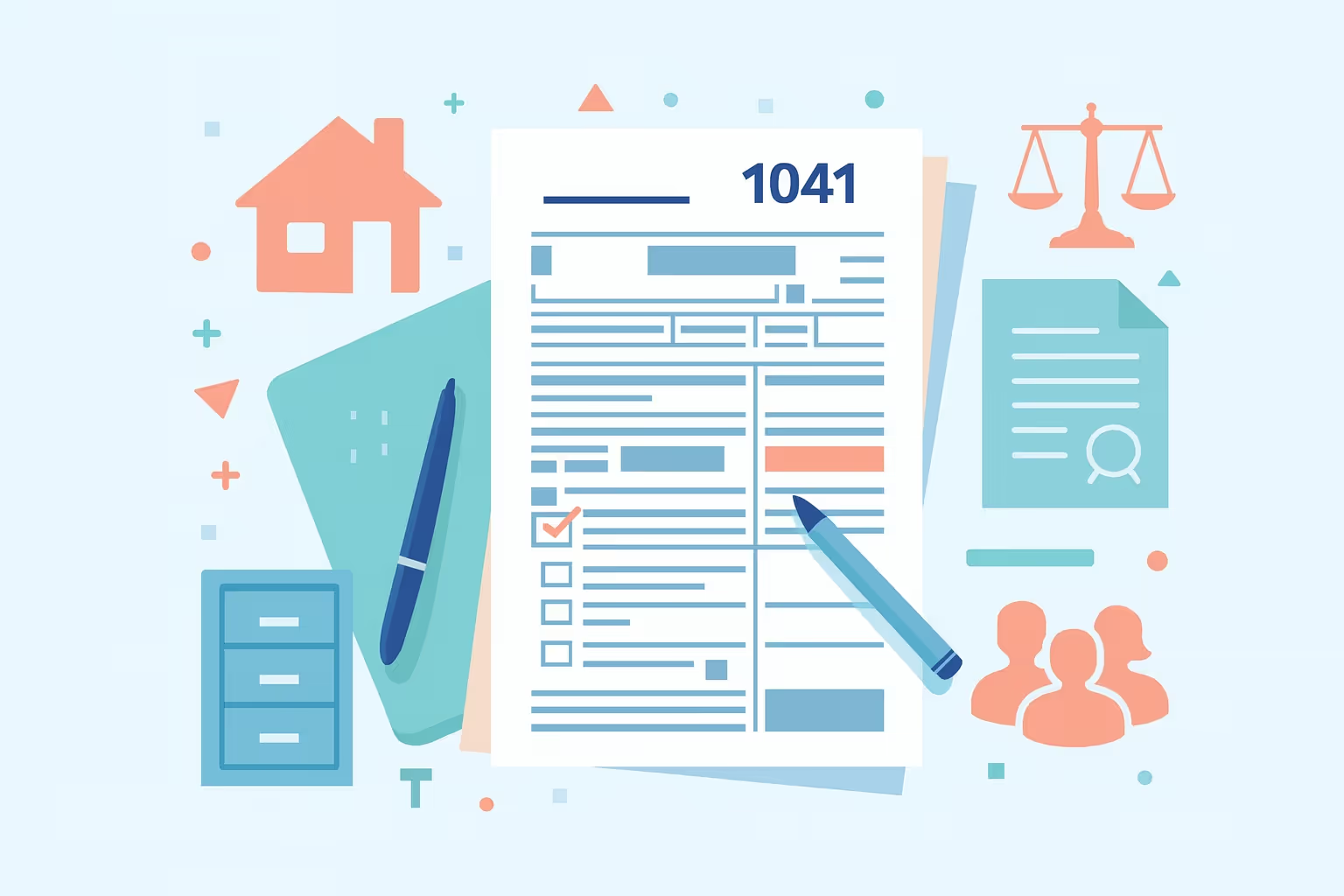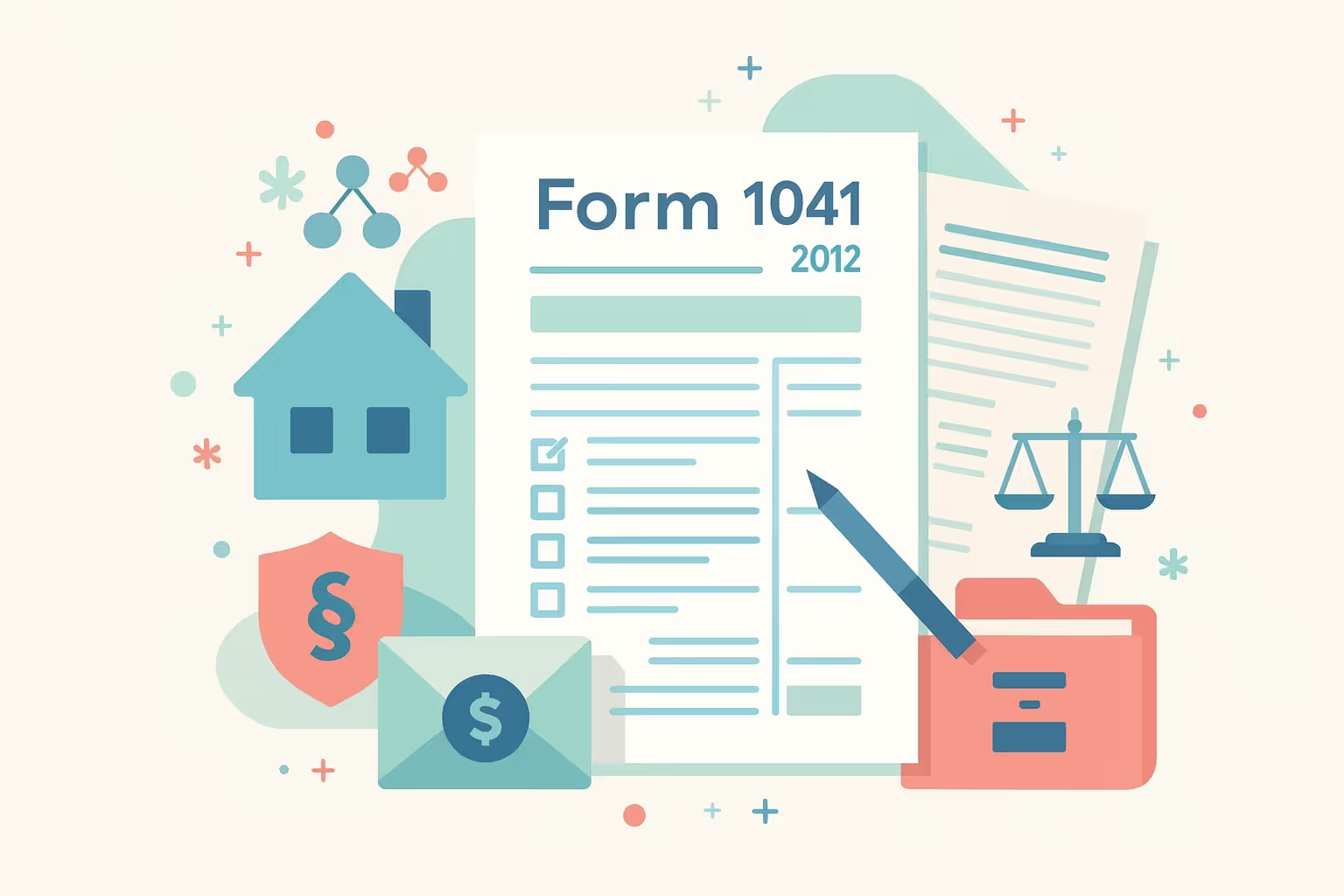IRS Form 1041 (2024): Tax Return for Estates and Trusts
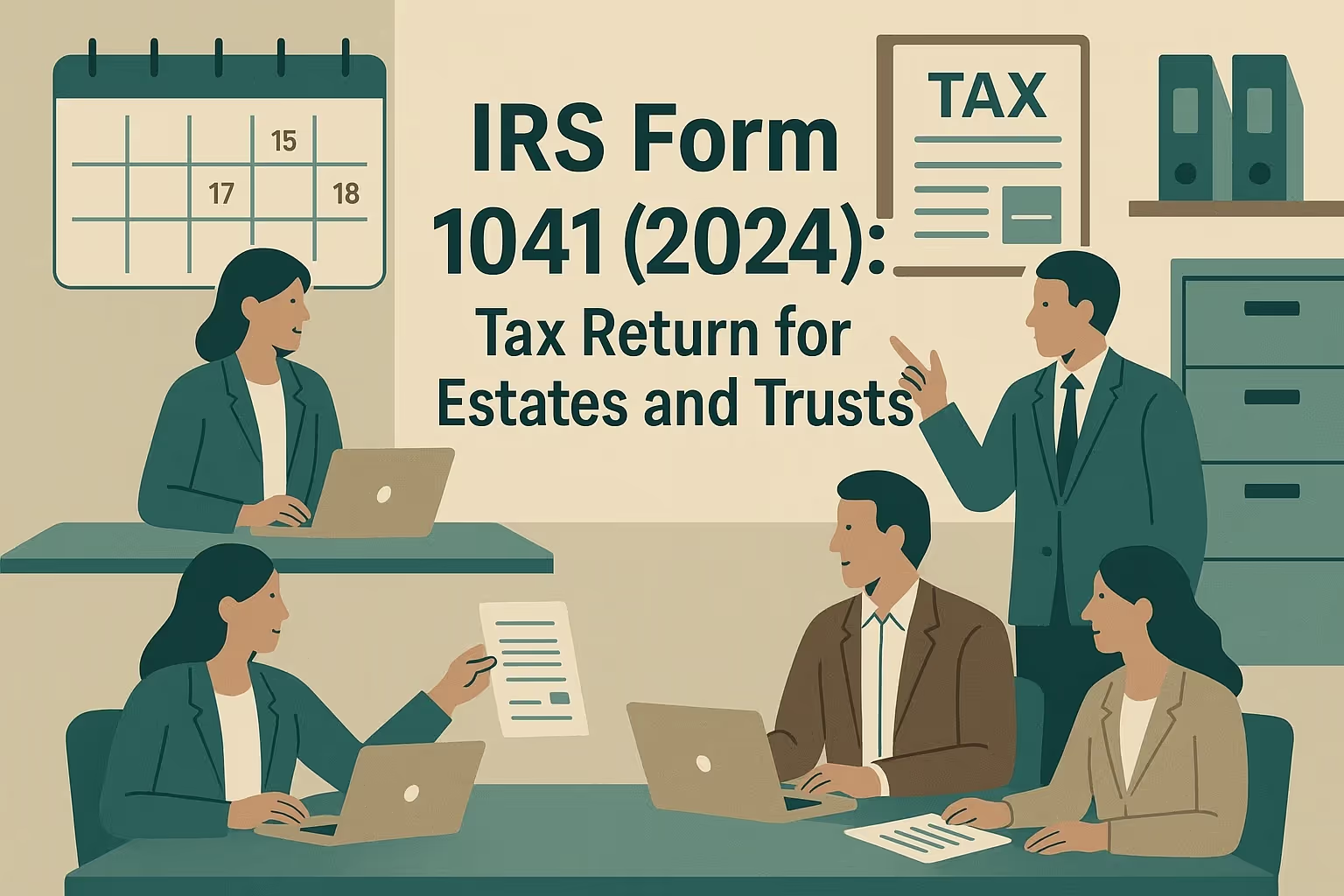
What IRS Form 1041 (2024) Is For
IRS Form 1041 (2024) is the U.S. income tax return for estates and trusts that fiduciaries must file to report income, deductions, credits, and taxable income. It applies to a domestic decedent’s estate, a bankruptcy estate, a grantor trust, or a foreign trust. The Internal Revenue Service requires fiduciaries to report income such as wages, dividend income, interest earned, and capital gains as part of the estate or trust’s total income for the tax year.
The fiduciary, such as a trustee or personal representative, must file Form 1041, calculate income tax liability, and pay tax owed. The fiduciary issues Schedule K-1 forms to beneficiaries, showing each beneficiary’s share of income distributed and deductions. This income tax return is separate from a personal income tax return filed by individual taxpayers under the Internal Revenue Code.
When You Should File Form 1041
Form 1041 must be filed for any estate or trust with gross income of $600 or more, any taxable income, or a nonresident alien beneficiary. Calendar-year filers must submit by April 15, 2025, or the next business day if the deadline falls on a weekend or a federal holiday. Fiscal-year filers must file by the 15th day of the fourth month after the close of the tax year.
If an error occurs, fiduciaries can amend a prior income tax return to correct beneficiary details, adjust deductible expenses, or update income distribution deduction amounts. Refund claims must be filed within three years of the original filing date or within two years from the date taxes were paid, whichever is later.
For more resources on filing or understanding prior-year IRS forms, visit our guide on Form 1041 – Income Tax Return for Estates & Trusts.
Key Rules for the 2024 Tax Year
- Capital Gains Rate: Estates and trusts pay a maximum rate of 20% on taxable income exceeding $15,450, with rates of 0% and 15% applicable to lower thresholds.
- Filing Requirement: Filing is required for any estate or trust with gross income of $600 or more.
- Fiscal Year Option: Estates may elect a fiscal year; however, most trusts are required to use a calendar year for tax purposes.
- Employment Taxes: Employment taxes apply if wages paid to household employees are reported on a tax return.
- Distribution Deductions: Fiduciaries may claim an income distribution deduction or a distribution deduction for income distributed to beneficiaries.
Step-by-Step Filing Overview
- Gather Transcripts and Records: Request IRS account transcripts using Form 4506-T under the employer identification number for the estate or trust. These transcripts confirm income earned, wages, interest, and dividend income.
- Complete the Correct Form: Use the 2024 Form 1041 and follow the specific instructions from the Internal Revenue Service. Attached are the required schedules, such as Schedule A for charitable deductions, Schedule B for income distribution deduction, Schedule G for tax computation, and Schedule J for accumulation distribution.
- Attach Supporting Documentation: Include the trust document, property records, and a list of assets. Report business income, capital gains, and other income sources accurately.
- File and Pay: You can e-file or mail the return. If you owe money, pay tax promptly to avoid penalties and interest. The IRS will issue a tax bill if additional payment is due.
- Maintain Accurate Records: Keep copies of all forms, schedules, and receipts, and accurately record expenses, credits, and deductions for the current year, in case of possible IRS review.
Learn more about federal tax filing through our IRS Form Help Center.
Common Mistakes to Avoid
- Incorrect Beneficiary Reporting: Always verify each beneficiary’s share of income distributed on Schedule K-1.
- Missing Income Sources: Include wages, interest, dividend income, and capital gains from property or other trusts.
- Deduction Errors: Avoid claiming the same deductions across multiple estates and trusts.
- Fiscal Year Confusion: Note that estates can use budgetary years, but most trusts are required to use the calendar year.
- Late K-1 Delivery: Send K-1s to beneficiaries on time to prevent reporting issues.
- Estimated Tax Errors: Use Form 1041-ES to calculate and determine estimated taxes owed throughout the year.
Learn more about how to avoid business tax problems in our guide on How to File and Avoid Penalties.
What Happens After You File
After you file Form 1041, the Internal Revenue Service typically processes the return within six to twelve weeks, depending on whether it was e-filed or mailed. If you owe taxes, you will receive a tax bill and can request an installment plan using Form 9465. Penalty relief may be available if you show reasonable cause.
Estates and trusts must continue filing annually until all assets are distributed and the decedent’s estate is closed. The final return should include funeral expenses, deductions, and all final distributions of cash or property, as applicable. If two or more trusts are involved or a bankruptcy estate exists, coordinate filing to avoid duplication. Future distribution income should be reported accurately to ensure that tax credits and deductible expenses are applied correctly and accurately.
FAQs
What are the penalties for late filing?
The IRS charges a 5% penalty per month on unpaid tax, up to 25%. If the return is filed more than 60 days late, the minimum penalty is $510 or 100% of the unpaid tax, whichever is less.
Can I amend Form 1041 to claim a refund?
Yes, check the “Amended return” box in item F, make the necessary corrections, and attach supporting documentation. Including schedules that show income, deductions, or changes to beneficiary reporting strengthens your refund request.
Do I need to file an annual report every year?
Yes, estates and trusts must file annually as long as they have gross income of $600 or more, taxable income, or a nonresident alien beneficiary. Annual filing continues until all assets are distributed and the estate or trust is closed with the Internal Revenue Service.
What’s the difference between an estate and a trust?
An estate begins at the decedent’s death and is managed by a personal representative, while a trust is created under a trust document and administered by a trustee. Both must report income, calculate tax liability, and file Form 1041 each year until final distribution.
Should I also amend state filings?
Yes, when you amend a federal Form 1041, most states require you to amend the related state fiduciary return as well. Each state has its own deadline and procedure; therefore, contact your state tax agency for specific instructions.
For more resources on filing or understanding prior-year IRS forms, visit our Forms Hub.

















